A Simplified Guide to Using Drip Campaigns for Sales Engagement [With Real Examples]
![A Simplified Guide to Using Drip Campaigns for Sales Engagement [With Real Examples]](https://webimages.zixflow.com/653a451d799118c17c82d94c_Using_20_Drip_20_Campaigns_20for_20_Sales_20_Engagement_20_3_807d00b199.png)
In the world of sales, effective communication and engagement with potential customers are crucial for success. Brands use many tactics like email marketing, SMS marketing, WhatsApp marketing, etc for effective engagement with their clients and potential customers. One more powerful tool that can help you achieve this is a drip campaign.
A drip campaign allows you to automate and personalize your communication efforts, ensuring that your leads receive relevant and timely information.
In this blog post, we'll provide a simplified guide to using drip campaigns for sales engagement, complete with real examples to help you implement this strategy effectively.
But before proceeding further, let us understand the meaning of the drip campaign.
What are drip campaigns?
Imagine having a faucet that releases water in a slow, consistent drip.
Well, a drip marketing campaign works similarly, but instead of water, it involves sending a series of pre-scheduled, automated messages to potential customers over some time.
The term 'drip' here refers to the gradual and consistent delivery of these messages, similar to the way water drips from a faucet.
Let's say you're selling a product or service, like sales workflow automation software. With a drip campaign, you can create a sequence of emails and text messages that are sent out at specific intervals or triggered by certain actions taken by your prospects. The goal is to gradually guide them toward purchasing while establishing trust and credibility.
The beauty of a drip campaign is that it's automated, so once you set it up, it runs on its own. You can focus on other aspects of your sales process while knowing that your prospects are receiving a series of well-timed messages designed to keep them engaged and interested.
Types of drip campaigns
Drip campaigns can be conducted through various communication channels, depending on your target audience's preferences and the nature of your business.
Here are a few popular drip campaigns:
Email drip campaigns.
Email is the most popular and widely used channel for drip campaigns. It allows you to deliver personalized and visually appealing messages directly to your prospects' inboxes for increased sales engagement.
With email drip campaigns, you can automate the sending of a series of emails based on predefined triggers or specific time intervals.
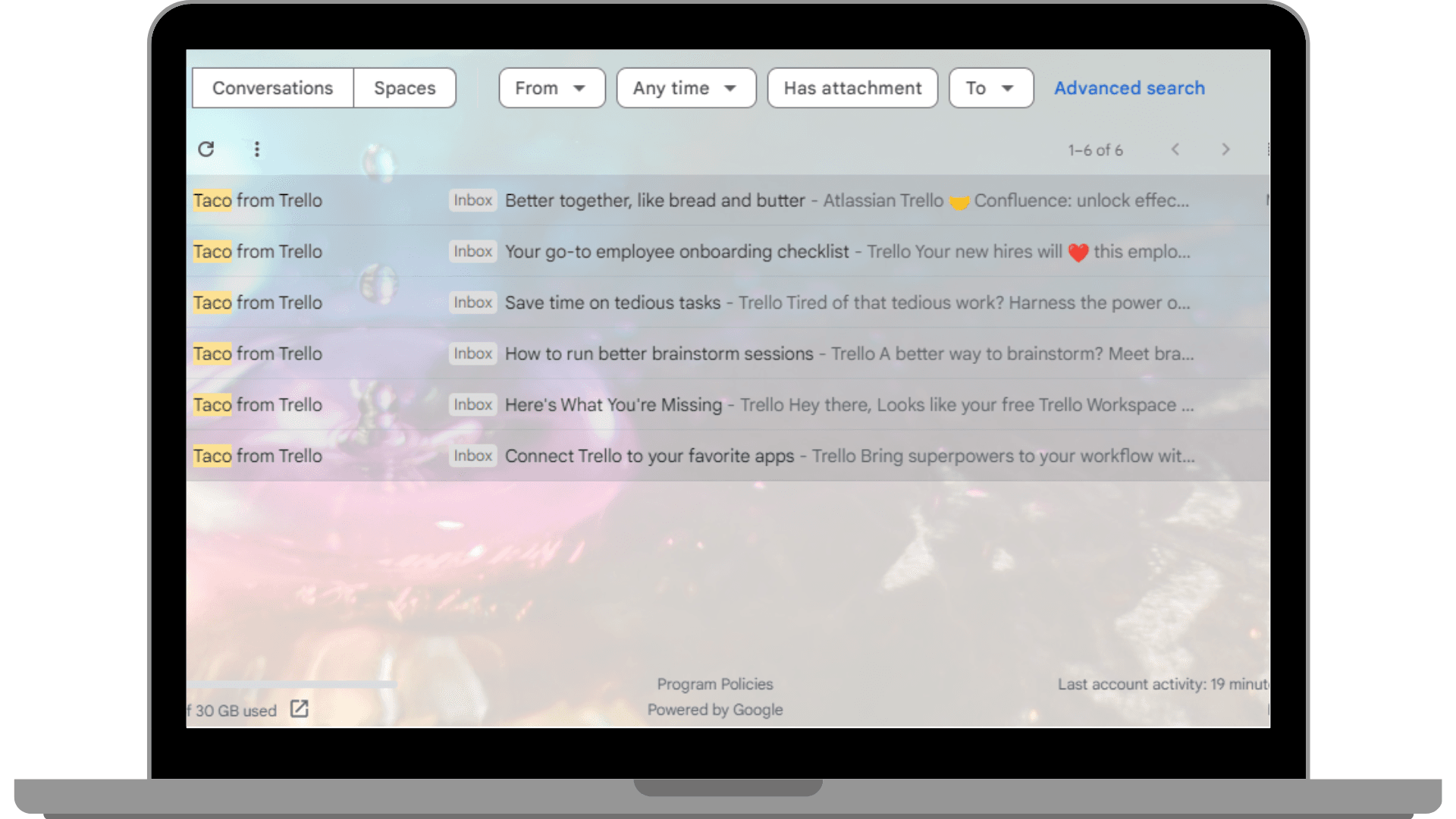
This channel is effective for providing detailed information, sharing content, showcasing products, and driving conversions.
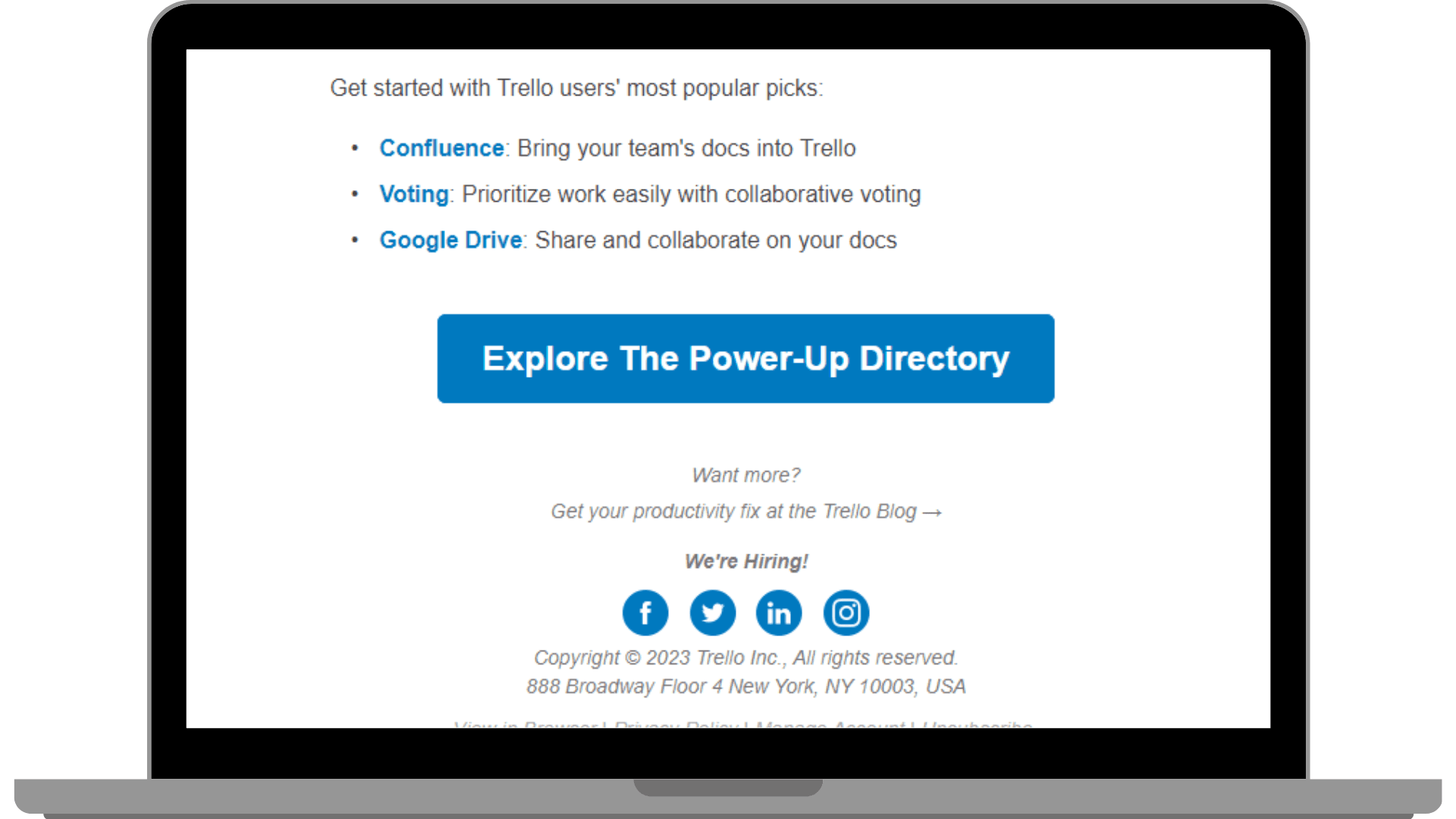
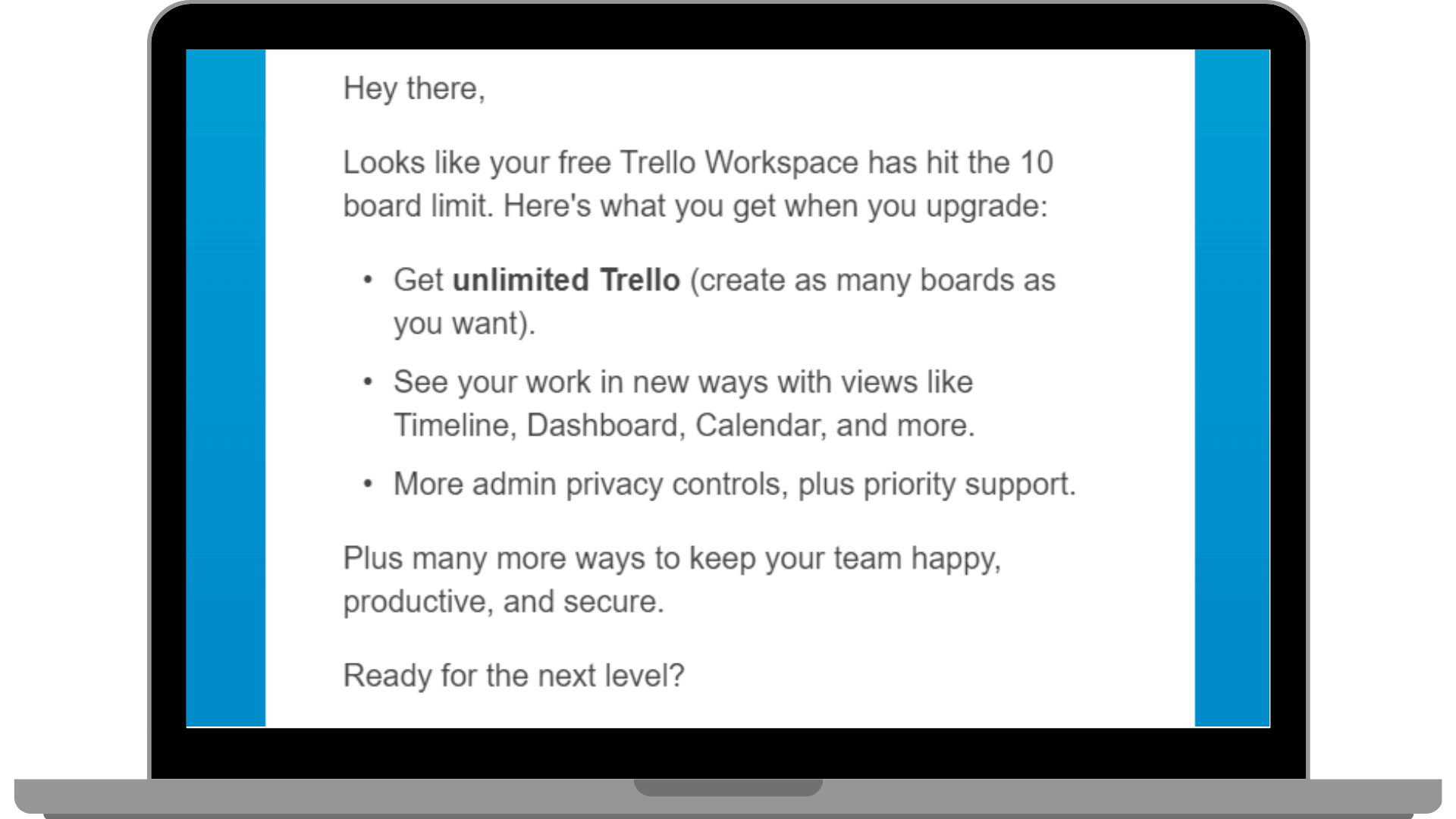
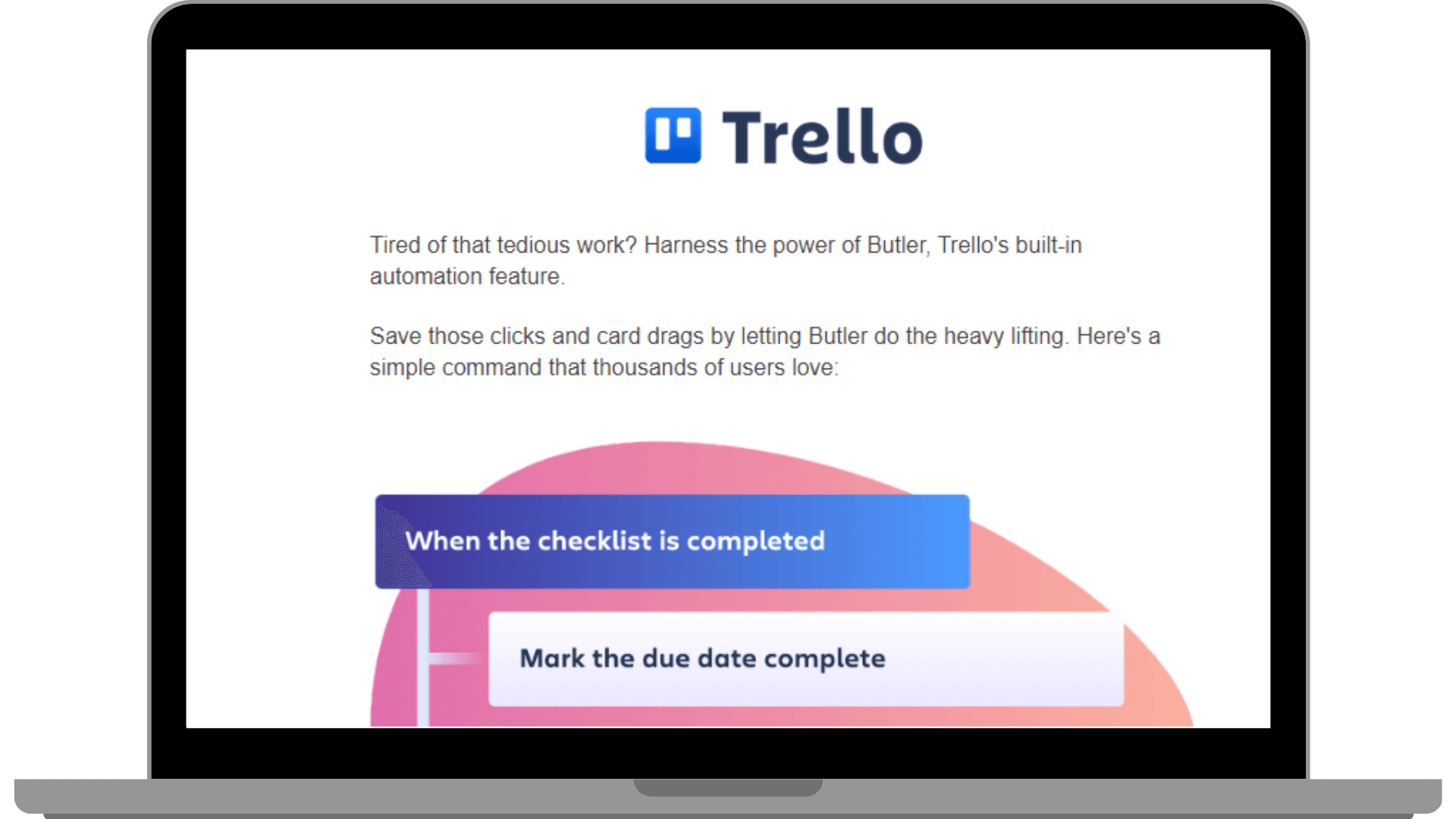
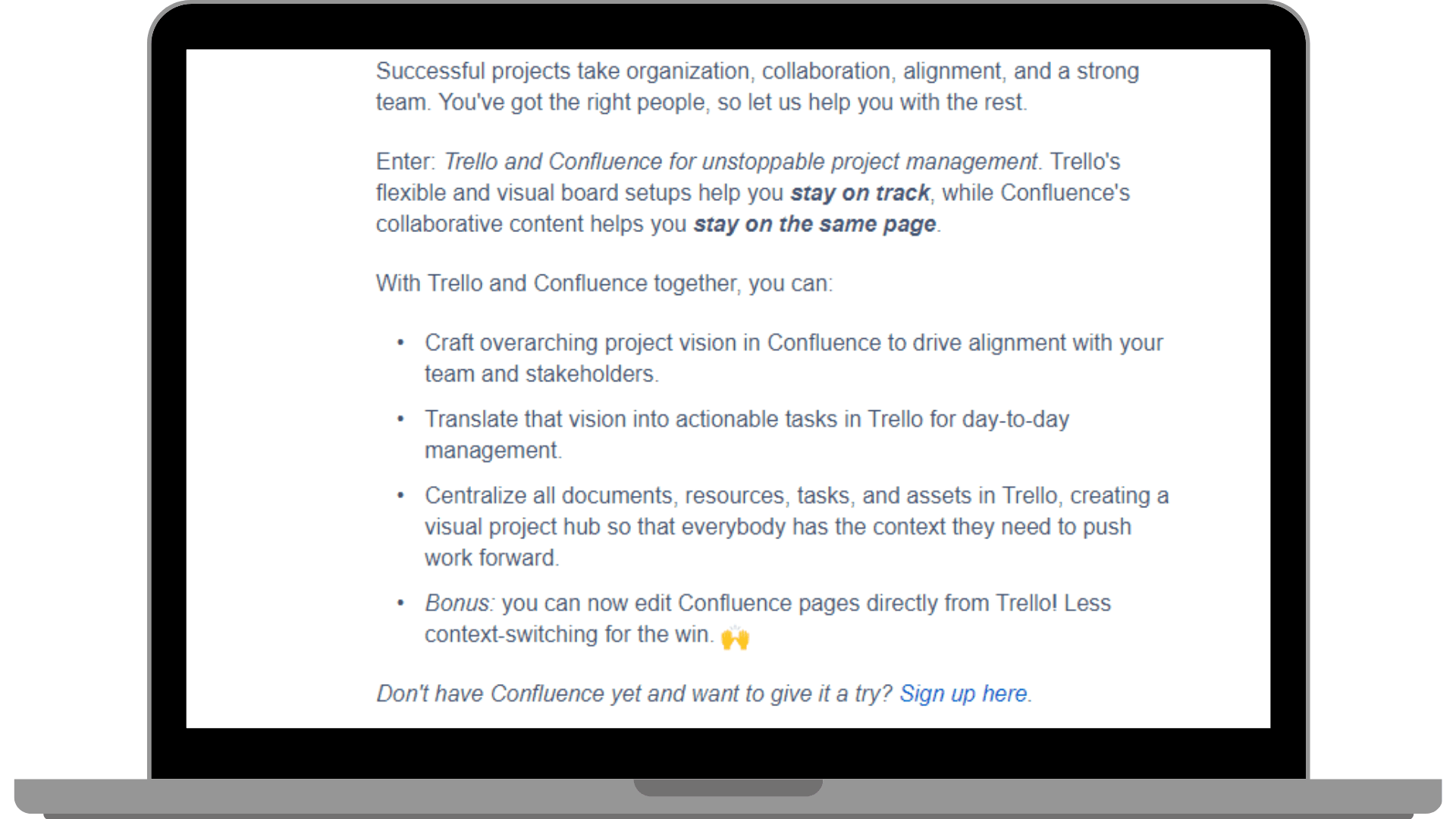
Now you can draft your customized email campaign with the help of Zixflow.
SMS drip campaigns: Direct and personal
In an era of mobile dominance, SMS drip campaigns offer a direct and highly personal channel for reaching your target audience.
With text messages, you can deliver concise and impactful messages right to their mobile devices. SMS drips are particularly effective for time-sensitive offers, appointment reminders, or exclusive promotions.
Just remember to ensure compliance with local regulations and respect your recipients' preferences for receiving text messages.
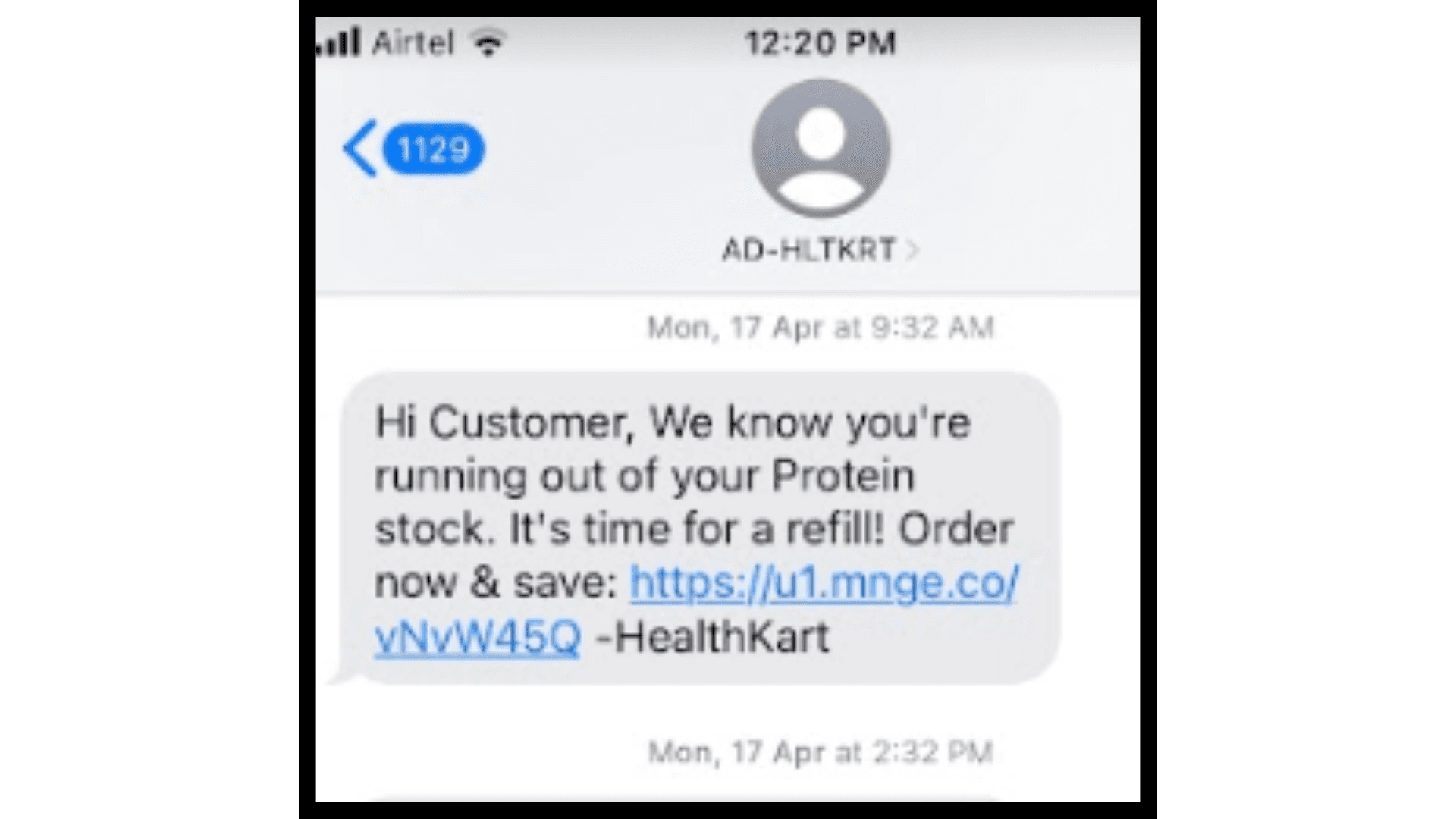
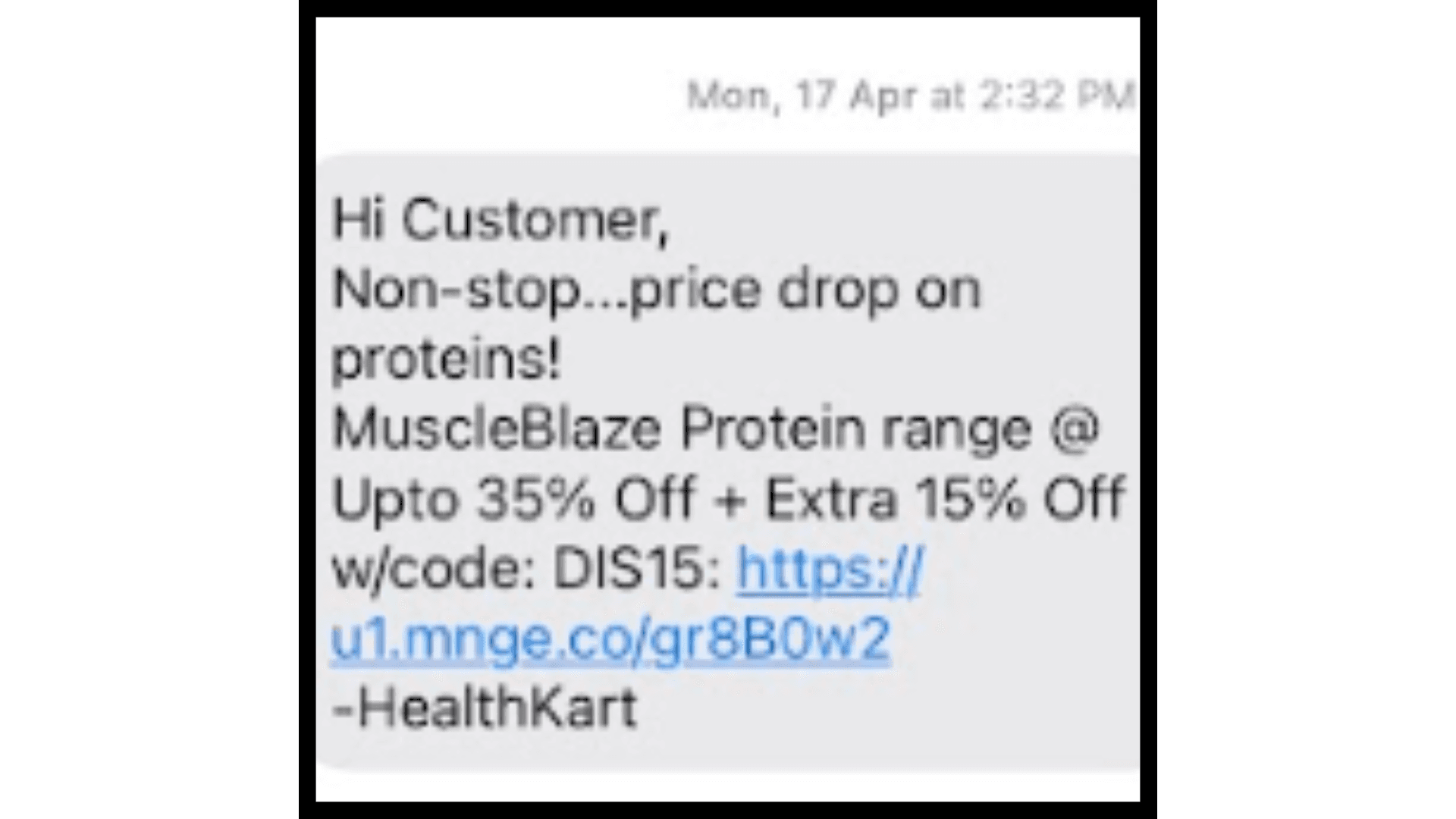
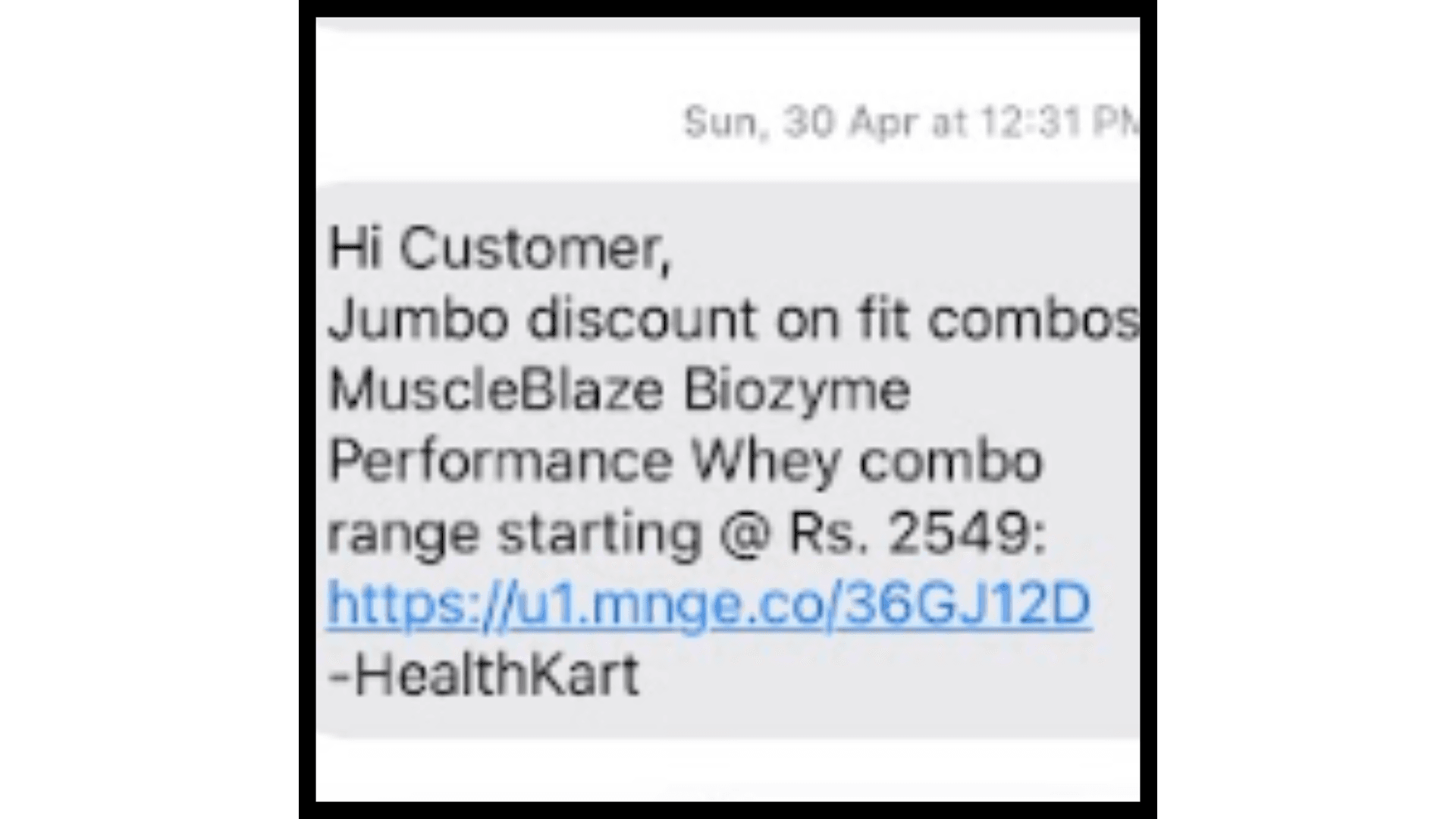
Sending manual SMS can be a time taking task. Instead, to save time, you can use automated tools for sending drip SMS messages.
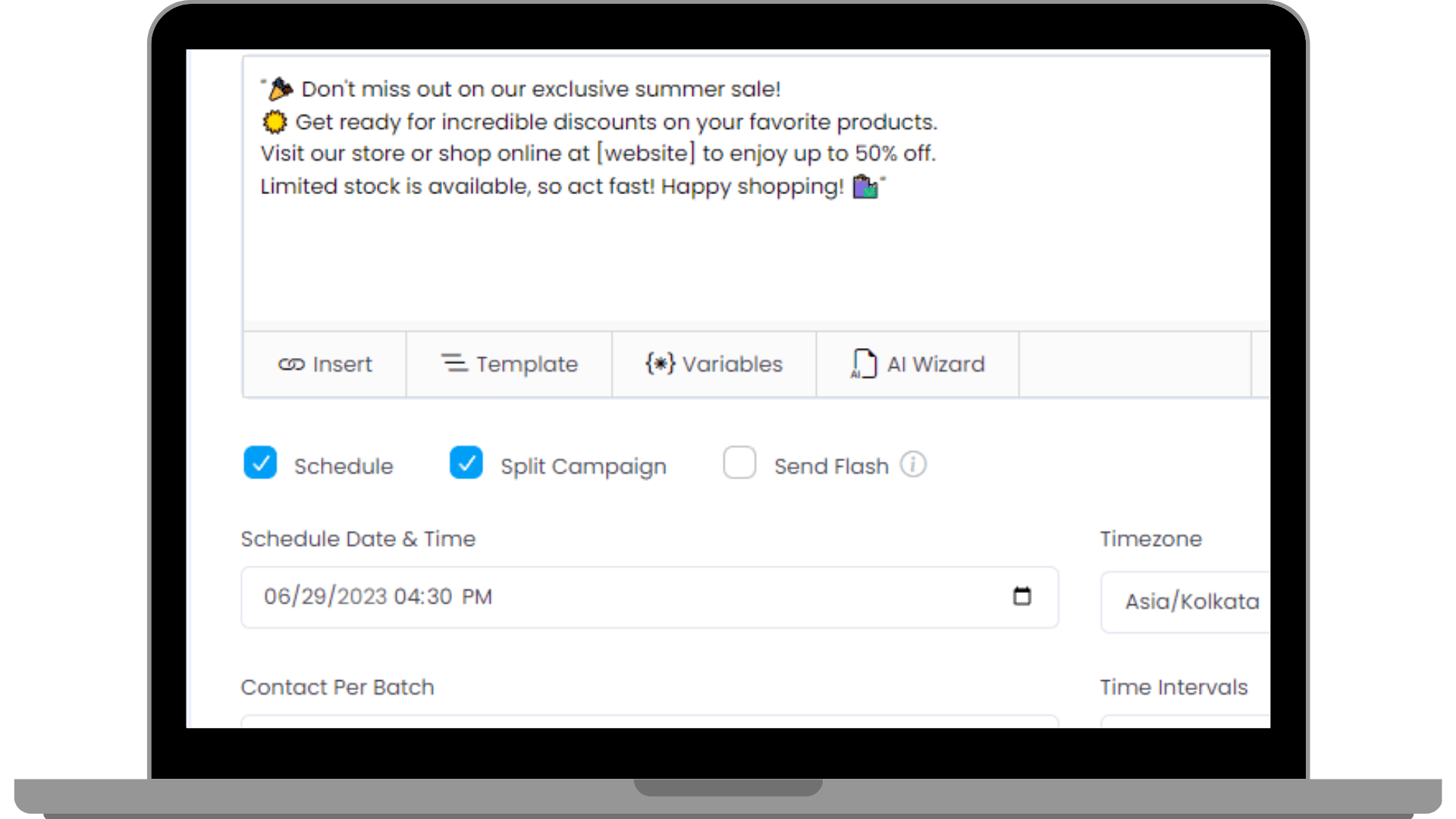
WhatsApp drip campaigns
WhatsApp, with its massive user base and high engagement rates, presents a unique opportunity for drip campaigns.
By leveraging WhatsApp Business API or WhatsApp Business Solution Providers, you can create great WhatsApp marketing campaigns and deliver automated, personalized messages to your customers directly through the app.
WhatsApp drip campaigns are particularly useful for providing customer support, sharing product updates, and nurturing leads in regions where WhatsApp is a popular communication tool. This technique is especially popular among e-commerce giants using WhatsApp for their marketing efforts.
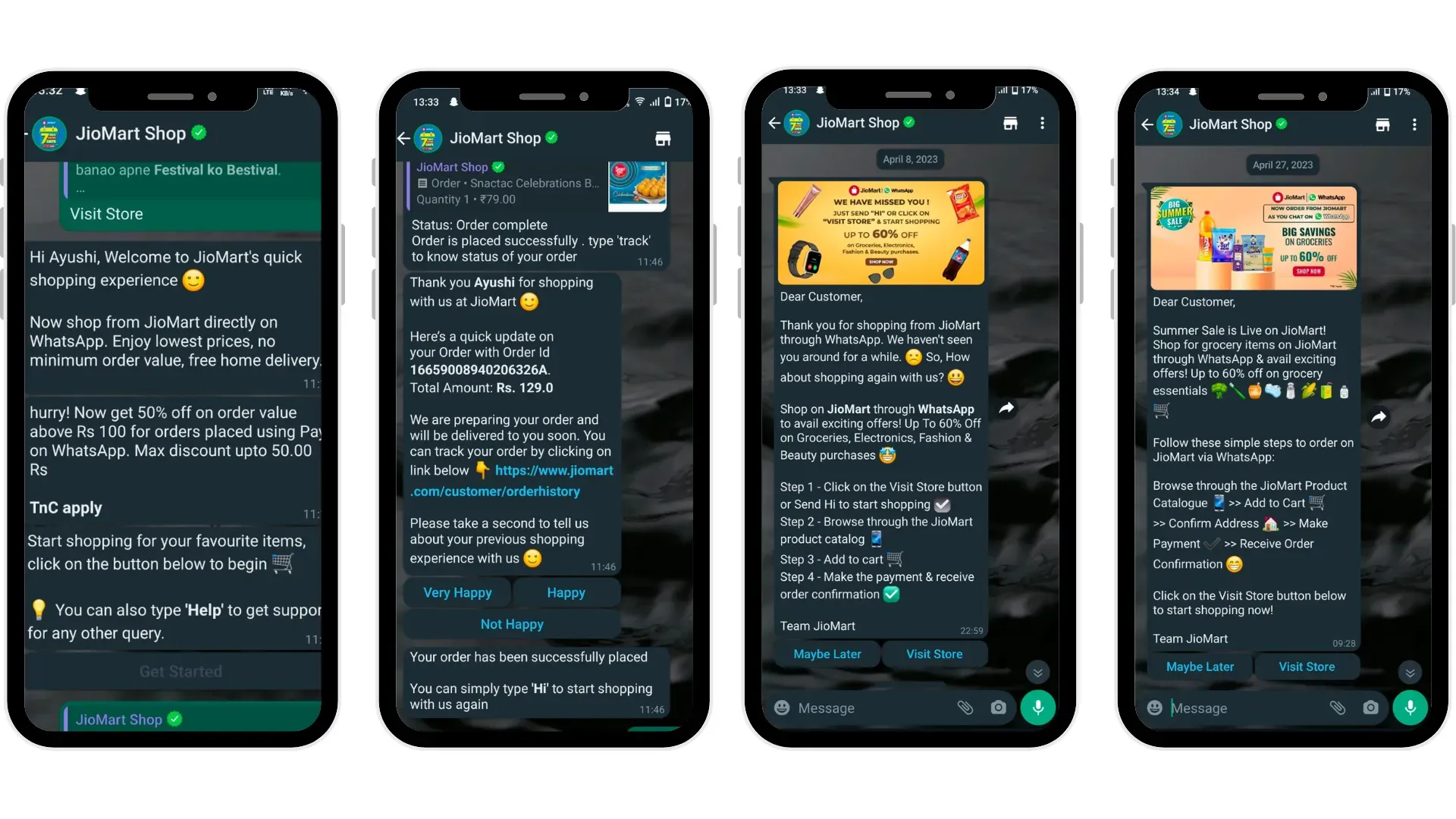
You can use an automated sales platform to send WhatsApp drip messages to increase the efficiency of your organization and boost your sales pipeline at every stage.
Social media drip campaigns
Social media platforms like Facebook, Twitter, LinkedIn, and Instagram Feed provide excellent opportunities to engage with your audience through drip campaigns.

Your business must have posted on various social media channels. These posts including educational content, product showcases, testimonials, and special offers act as drip campaigns and create awareness for your product in the mind of consumers.
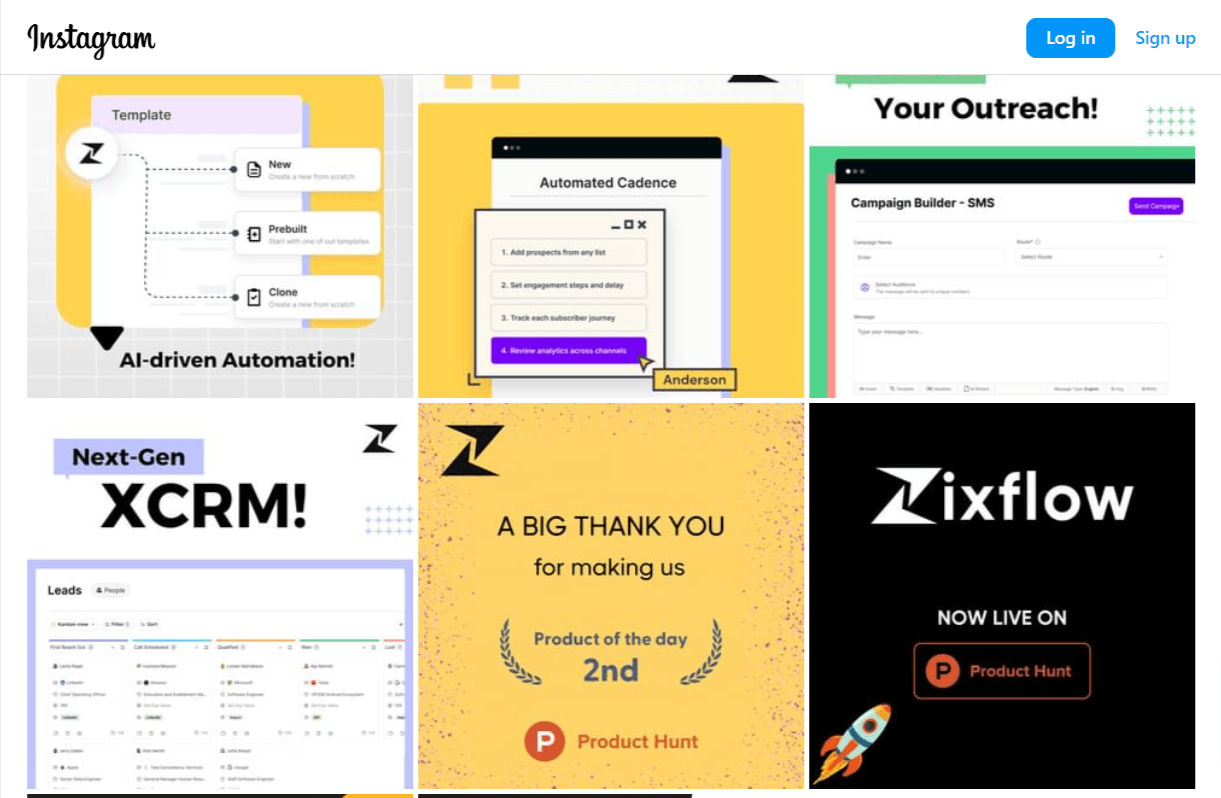
You can also leverage LinkedIn for sending the InMail drip message to all the members even if you are not connected to them. This allows you to make a broader audience for your drip campaign.
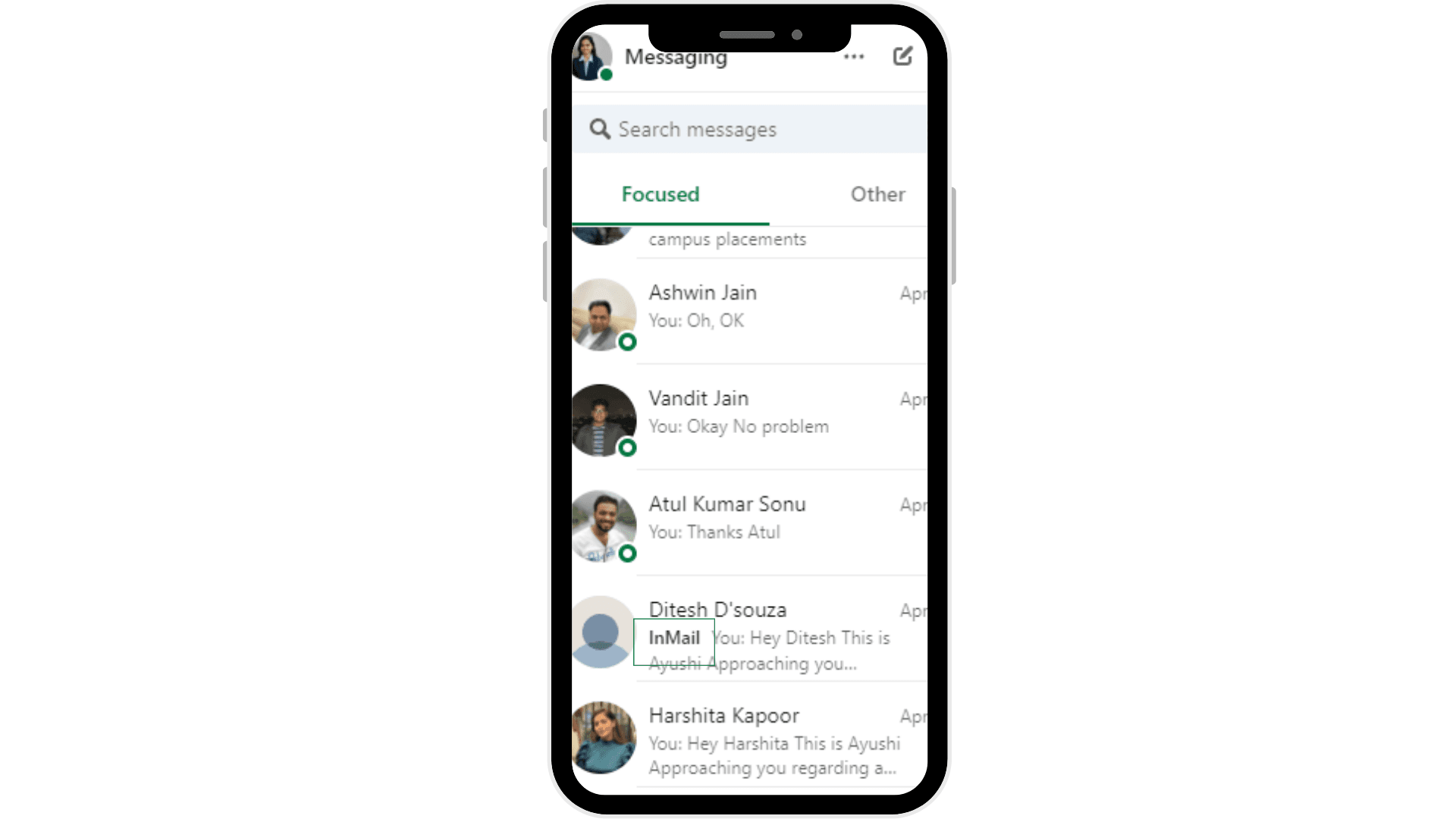
In-app drip campaigns
If you have a mobile app, in-app messaging drip campaigns can be a game-changer for you.
These campaigns involve delivering messages and notifications directly within your app to guide users, provide updates, or drive engagement. You can also use chatbots for lead generation in your drip campaigns.
In-app messaging allows for contextual and real-time communication, enabling you to deliver personalized content based on user behavior and preferences.
How to use drip campaigns?
Funnel of drip campaign
Let us understand the entire process of how to send drip campaigns to your prospects at different stages with the help of an email campaign:
Awareness stage
This is the first stage of your drip campaign to generate sales engagement.
At this stage, your goal is to create awareness and capture the attention of your target audience. Drip campaigns can help nurture leads and build initial engagement.
See how Ahrefs send emails at the awareness stage.
Drip Campaign: Ahrefs
Day 1: Welcome Email
When someone follows or interacts with your website or application, send them a welcome email introducing your brand and providing an overview of your products or services.

Day 3: Valuable Content
Send an email with a link to a blog post, video, or infographic that provides valuable information related to your industry. This helps establish your expertise and builds trust.
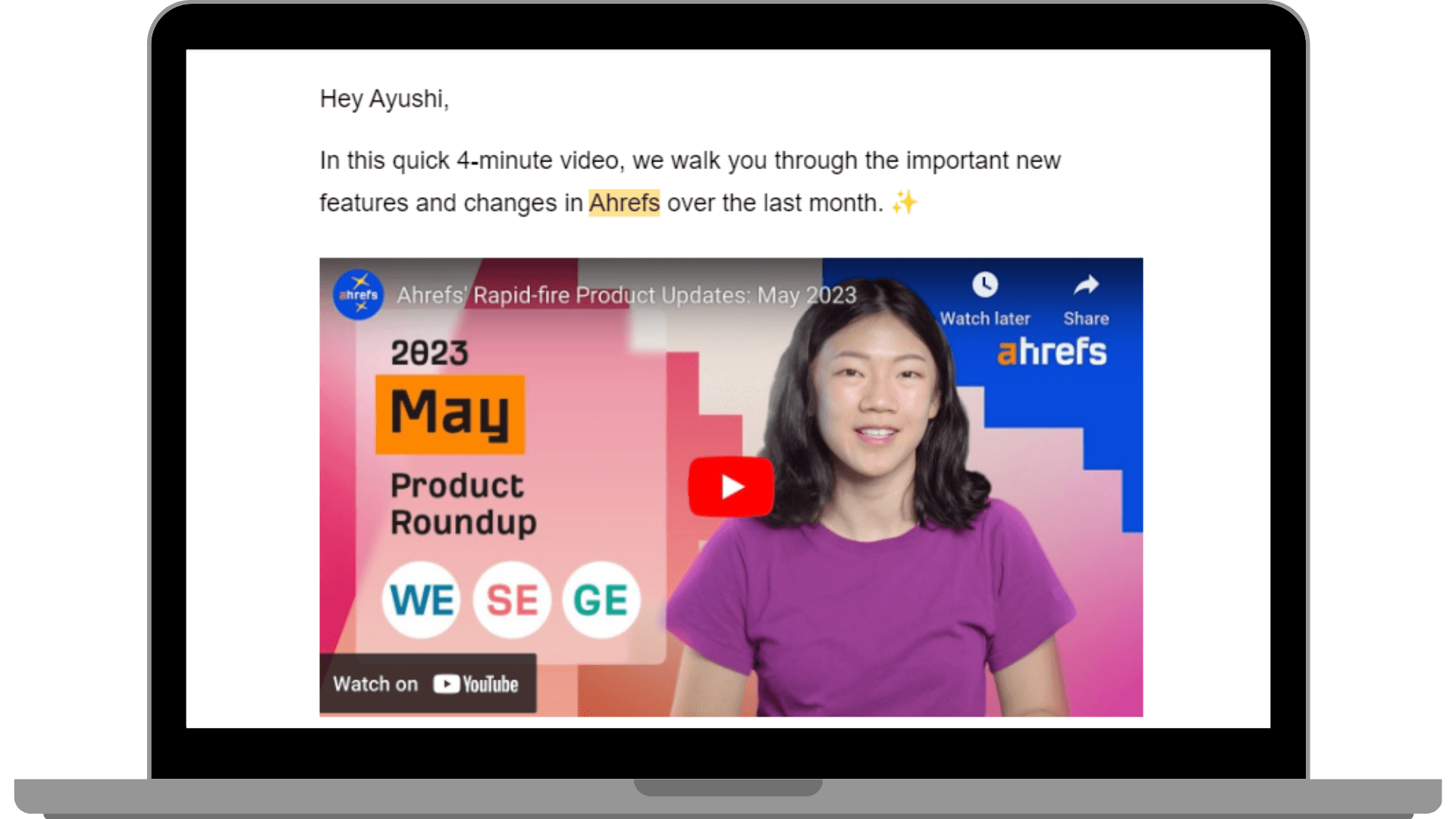
Consideration stage
Now, you are done with generating awareness for your product.
In the next stage, your prospects are actively considering their options and evaluating your offerings.
You can send drip campaigns to provide more detailed information and showcase the benefits of your products or services.
Here's an example:
Drip Campaign: Product Education
Day 5: Product Feature Highlight
Send an email highlighting a specific feature of your product or service, explaining how it solves a problem or fulfills a need.
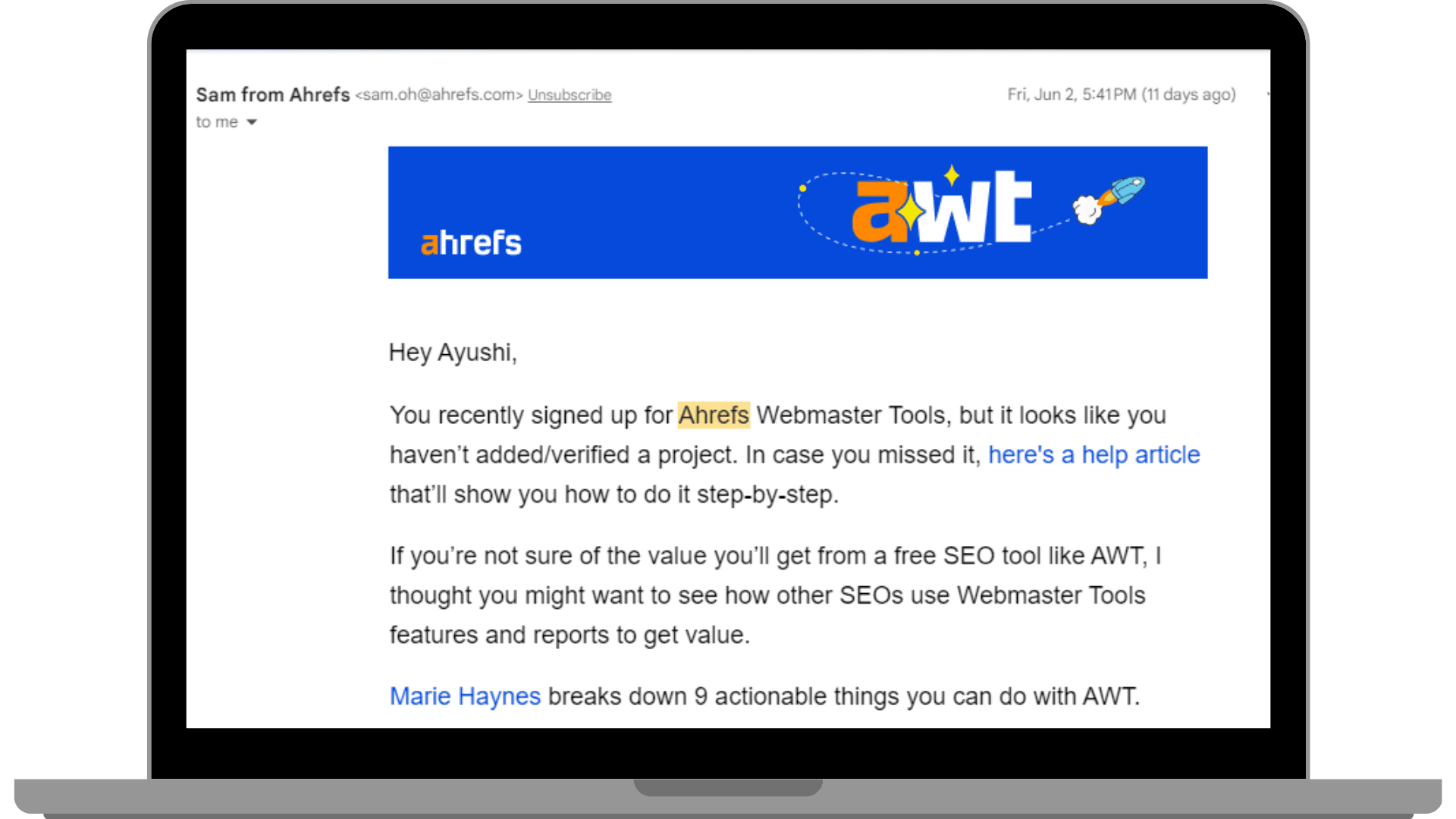
Day 7: Case Study
Share a case study or success story that demonstrates how your product or service helped a customer achieve their goals. This builds credibility and shows real-world applications.
Decision stage
At this stage, your prospects are ready to make a decision and convert into customers.
Now, you can send drip campaigns that can provide incentives, address concerns, and drive them toward a purchase.
Here's an example:
Drip Campaign: Conversion Boost
Day 10: Limited-Time Offer
Send an email with a time-limited discount or promotion to create a sense of urgency and encourage them to take action.
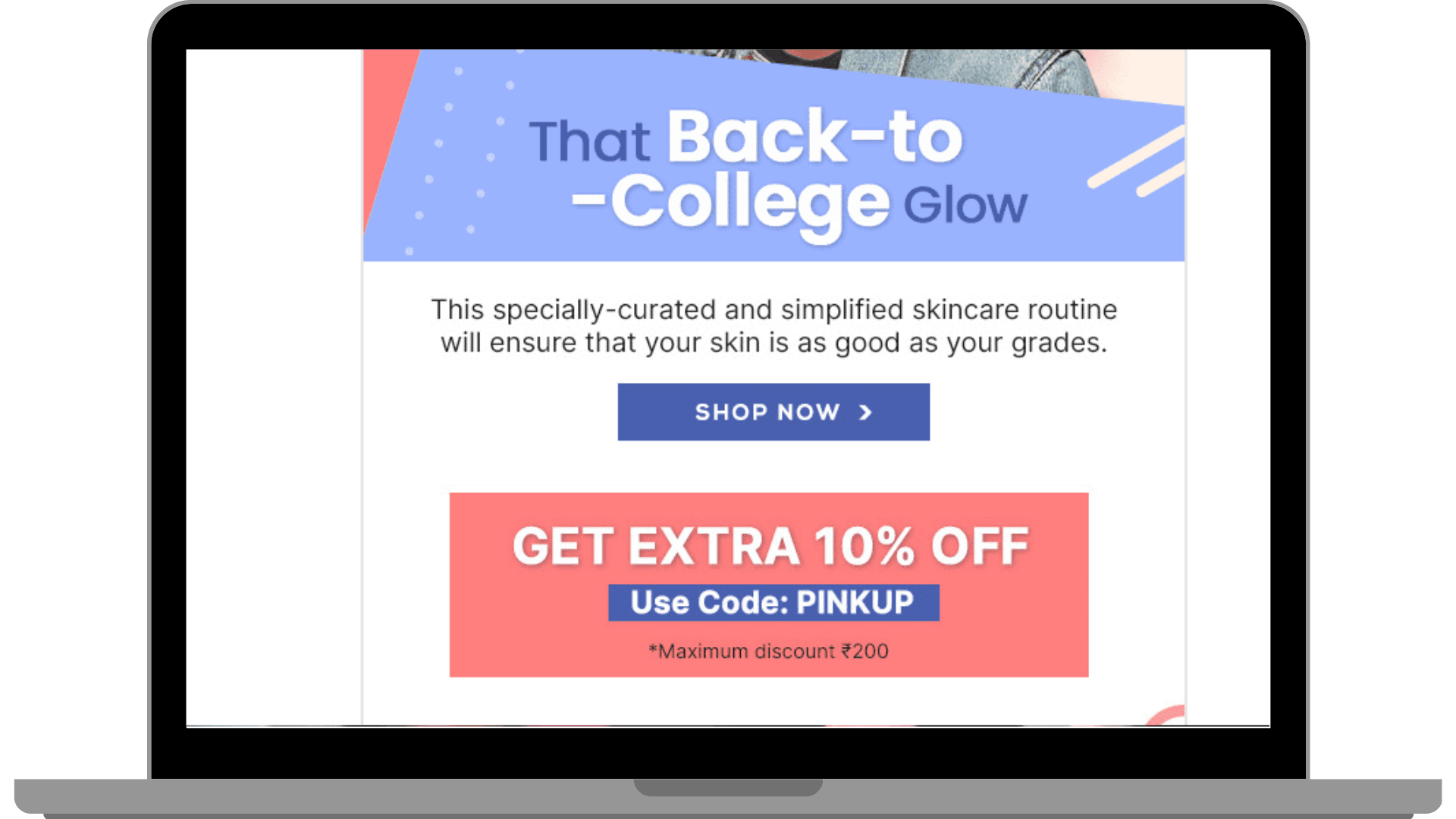
Day 12: Testimonials and Social Proof
Share testimonials or reviews from satisfied customers to build trust and provide social proof of your product's value.
Post-purchase stage
After the purchase, it's essential to maintain engagement, foster loyalty, and encourage repeat business.
Now, your drip campaigns can provide post-purchase support and nurture customer relationships.
Here's an example:
Drip Campaign: Customer Retention
Day 15: Thank You and Next Steps
Send a personalized thank-you email, express appreciation for their purchase, and provide information on what to expect next (e.g., shipping details, and onboarding instructions).
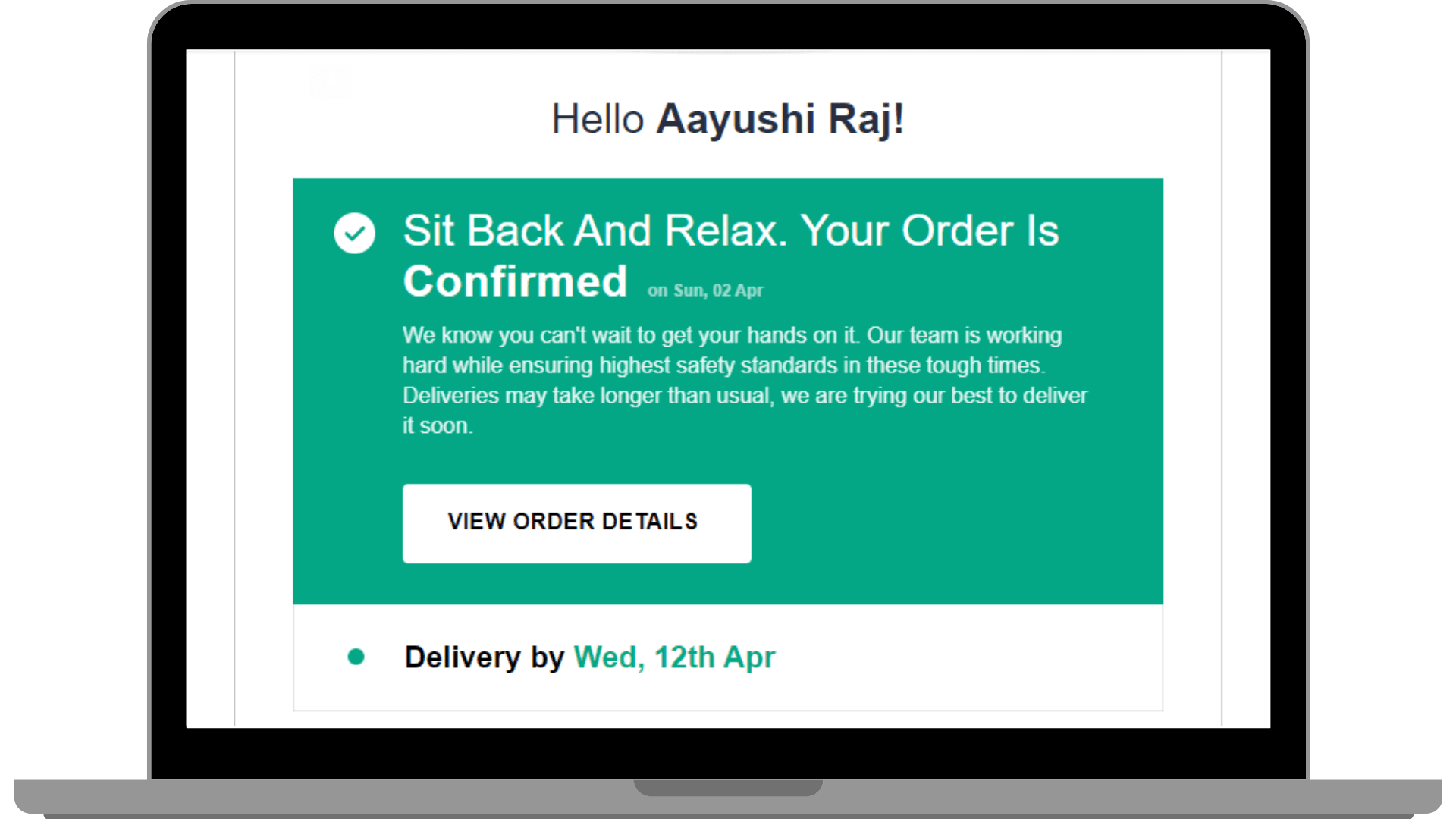
Day 20: Exclusive Content or Upsell Opportunity
Offer exclusive content such as tutorials, tips, or guides that enhance the customer's experience with your product. You can also suggest complementary products or upgrades.
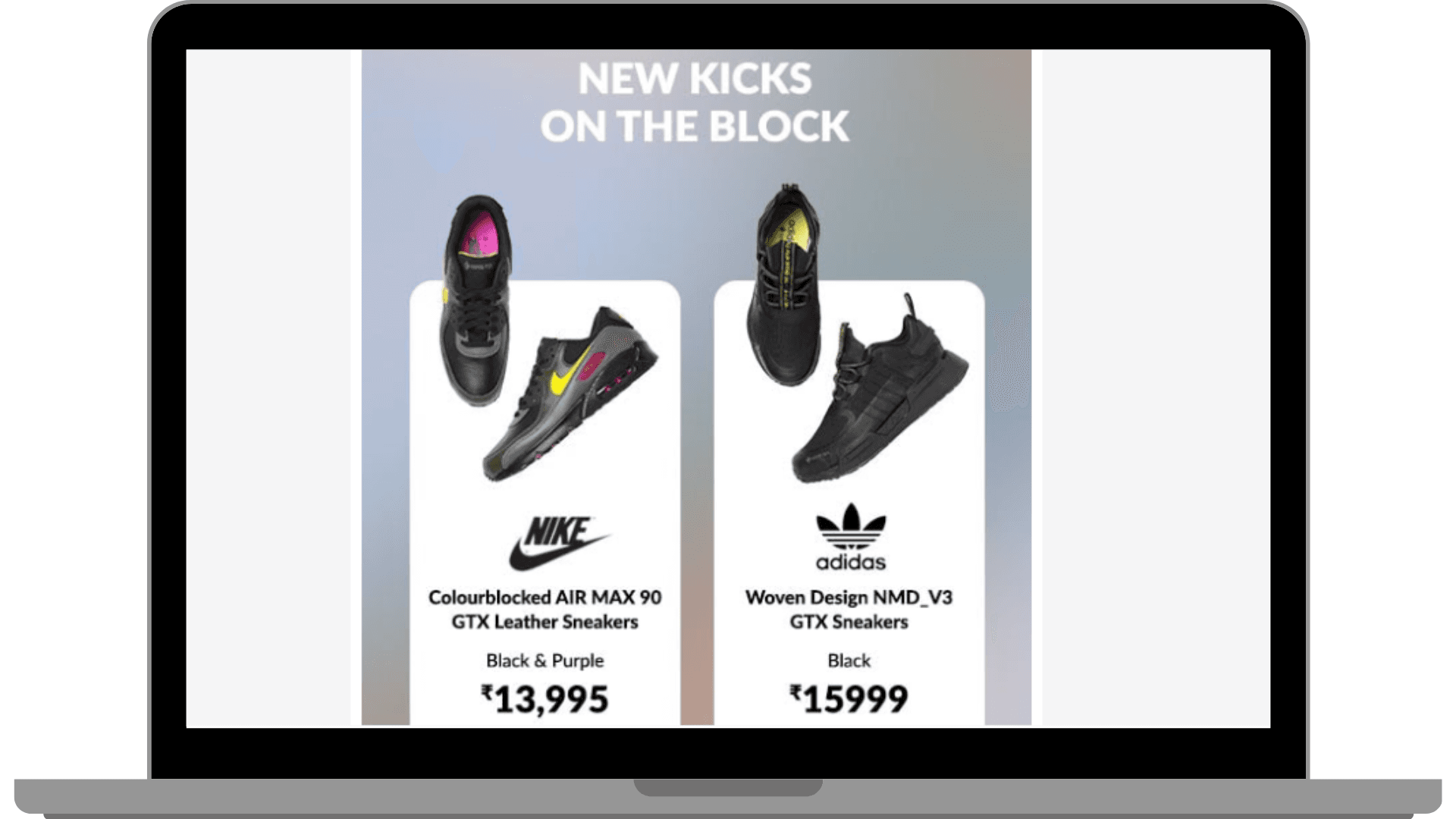
Why to use drip campaigns for sales engagement?
You might be wondering why I should use a drip campaign. Is it beneficial for my business or not?
By implementing a well-designed and targeted drip campaign, you can enhance your sales process, no matter what kind of sales you are involved in, and drive better results.
Nurture your leads
Drip campaigns allow you to nurture leads and build relationships over time. Rather than bombarding prospects with one-time sales pitches, you can deliver a series of targeted and relevant messages that gradually guide them through the sales funnel.
Consistent follow up
Drip campaigns ensure consistent follow-up with prospects, which is crucial for staying top of mind and maintaining engagement. You can follow up with your customers using sales cadence software.
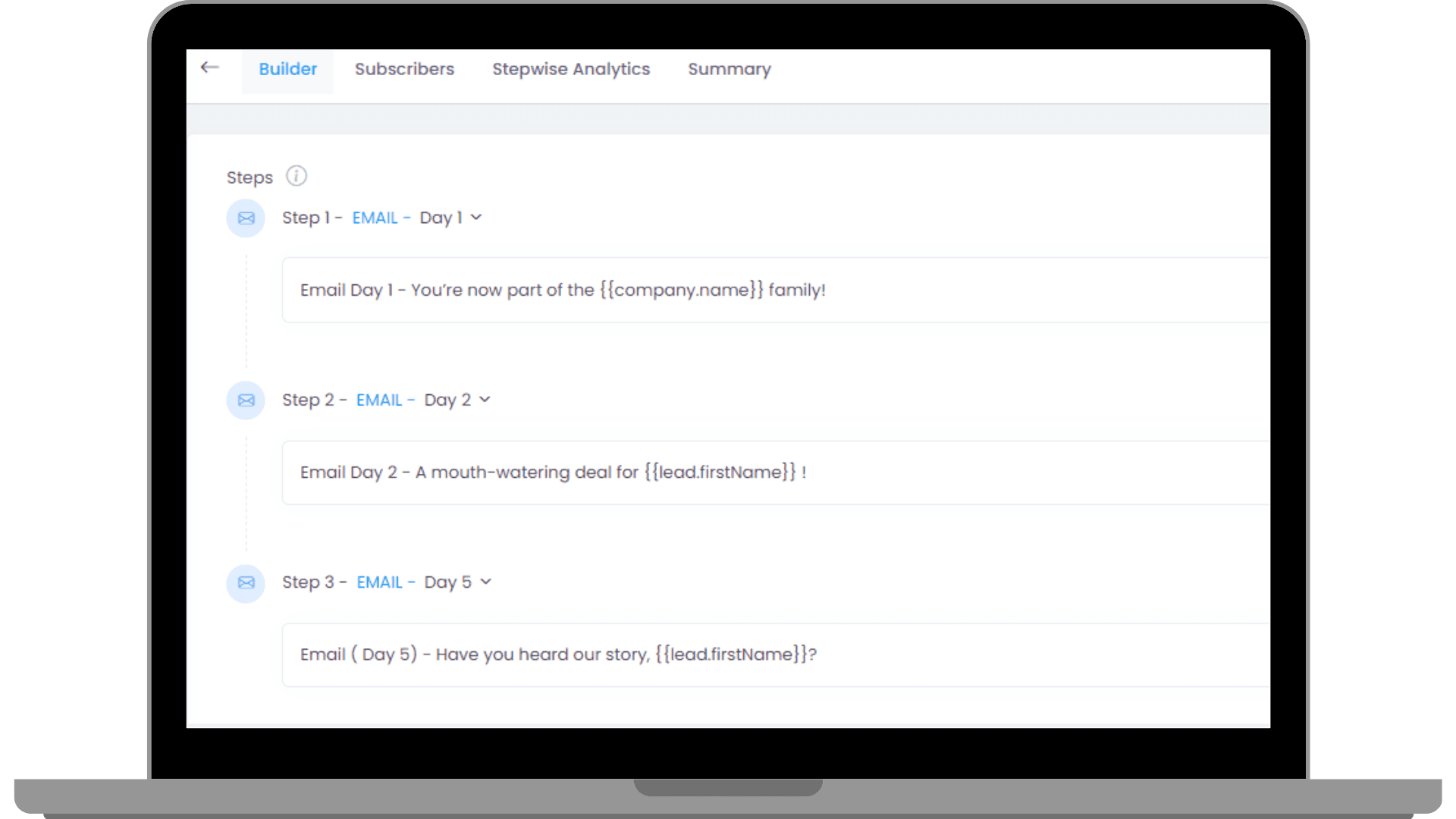
Sales engagements often require multiple touchpoints before a prospect converts into a customer. By automating a series of follow-up emails or messages, you can ensure that no leads slip through the cracks.
Personalization and segmentation
Drip campaigns can be highly personalized and segmented based on prospect attributes or actions. This allows you to deliver tailored content and offers that resonate with each individual.
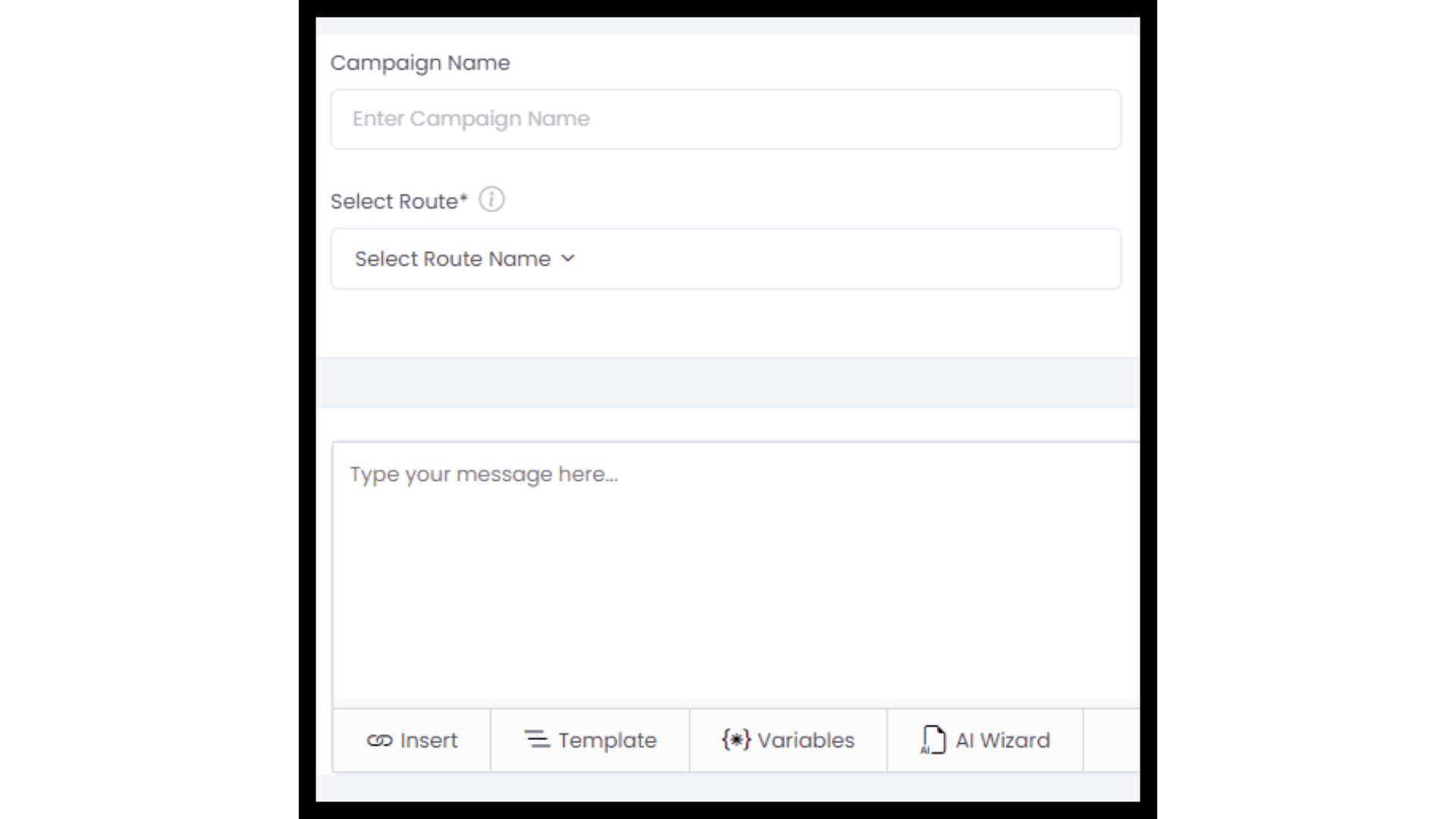
Increase your conversion rate
By providing valuable content for engagment, addressing objections, and offering incentives at appropriate stages, you can increase the chances of prospects becoming customers.
For example, a financial advisor can use a drip campaign to educate prospects about investment strategies, offer personalized consultations, and eventually convert them into clients.
Do’s for your drip campaign
✅ Personalize your message
Use the recipient's name, company, or any other relevant information in your emails to add a personal touch. Personalization creates a stronger connection with the recipient and shows that you've done your research.
✅ Provide value in every message
Each email in your drip campaign should offer something of value to the recipient. It could be helpful information, industry insights, educational content, or exclusive offers. Make sure your emails are relevant, interesting, and beneficial to the recipient.
✅ Set a consistent schedule
Plan out the frequency and timing of your emails to maintain consistency. Sending emails too frequently may lead to unsubscribes, while infrequent emails may result in the recipient forgetting about your brand. Find a balance that keeps your brand on their radar without overwhelming them.
✅ Include a clear Call To Action (CTA)
Each email should have a specific goal or desired action from the recipient. Whether it's clicking a link, signing up for a demo, or making a purchase, clearly communicate what you want the recipient to do. Use persuasive language and make the CTA stand out.
Don'ts for your drip campaign
Don’t ❌ overwhelm with emails
Avoid bombarding your audience with too many emails in a short period. Sending too many messages can lead to email fatigue and cause recipients to unsubscribe or ignore your emails. Find a balance between providing regular touchpoints and respecting your audience's inbox.
Don’t ❌ neglect personalization
Avoid generic and one-size-fits-all messages. Use the recipient's names, refer to their specific actions or preferences, and tailor the content to their needs. Personalization creates a more meaningful connection with your audience.
Don’t ❌ forget mobile optimization
With the increasing use of mobile devices, ensure your emails and landing pages are mobile-friendly. Neglecting mobile optimization can lead to poor user experience and lower engagement rates. Test your emails on various devices and screen sizes to ensure they are easily readable and interactive.
Don’t ❌ ignore analytics
Pay attention to the analytics and metrics provided by your email marketing platform or marketing automation tool. Analyze the data to gain insights into the performance of your drip campaign. Identify areas of improvement, such as low open rates or high unsubscribe rates, and make data-driven decisions to optimize your campaign.
Don’t ❌ neglect compliance
Adhere to applicable data protection and privacy regulations when conducting drip campaigns. Ensure you have proper consent to send emails and provide recipients with an easy way to opt out or unsubscribe from your emails.
Master sales engagement with drip campaigns
Now, embrace the power of drip campaigns, harness the sales process automation capabilities, and let your sales engagement soar to new heights. By understanding your audience, delivering value, and nurturing relationships over time, you'll create a sales journey that resonates, converts, and sets your business apart in the competitive landscape.
Now it's time to take action and apply the insights and strategies you've gained from this guide. Start crafting your drip content and sending engagement campaigns on multi-channels. Test, iterate, and refine and you will see yourself achieving your sales goals in no time.
May your sales engagement efforts flourish as you forge meaningful connections and drive remarkable results. The power is in your hands—go forth and conquer the world of sales with drip campaigns as your trusty guide!
